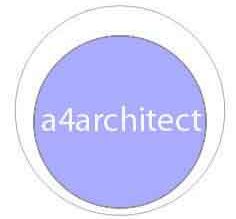Building Materials in Kenya.
1.What are the most common building materials used in Kenya?
For walls, we have machine cut quarry stones and cement.
For roofs, we have gauge 30 and gauge 32 steel roofing sheets, concrete and clay tiles and stone coated steel roofing tiles.
For windows, we have steel casement frames with glass infill. Aluminium framing is also increasingly becoming common.
For doors, we have timber doors on wooden frames for internal doors. For external doors we have steel doors on steel frames and hardwood doors on hardwood frames.
For internal finishes, we have cement plaster and paint.
For ceilings, we have chipboard, uPVC.
2.What causes buildings to collapse with reference to building materials?
Collapsing of buildings is usually a structural integrity issue. Structural integrity has the building materials and labour/engineering consultancy aspect.
Building can collapse if the labour and or engineering consultancy is not certified to offer such service hence poor quality.
Buildings can collapse also if the materials used , mainly cement, sand, ballast and steel, are not of the specified quality.
In case of cement, the cement could be weak, hence not strong enough when contractors use the usual mix ratios to make the building structure.
In case of sand, the sand could be flaky, as in the case of the dark Naivasha sand, hence not offering the much needed grip as in the case of the granulated yellow river sand.
In the case of ballast, the size could be too big to offer the much needed ratio strength.
In the case of steel, the quality of steel may be too malleable or too brittle, hence not offering the needed strength requirements.
All these are to be checked by registered structural engineers and Kenya Bureau of Standards, in the case of cement and steel, which require tests to ascertain quality.
Most cement sold in Kenya has the mark of 32.5 Kn/mm2 as the strength. Its up to Kenya Bureau of Standards to carry out random periodic test strengths to ensure these companies actually sell cement of the said strength.
In the case of steel, I have never seen any tests done by Kenya Bureau of Standards or if KBS have ever carried or do carry out random periodic steel malleability tests, they don’t advertise to the public. Same case with cement strength. In this case, the public will therefore need to carry out their private tests to confirm this,or KBS carries these tests out publicly for all the public to see and benefit.
In my hands on experience on day to day workings with structural steel, I come across some steel which is too brittle and breaks easily when fundis are working on it .
3.How do local building materials promote the structure of a building?
Some local building materials, eg quarry stone is structurally strong, hence increasing the structural strength of the building.
4.What types of local building materials can be used for construction?
Local building materials are machine cut masonry stone, timber doors, clay roofing tiles, locally manufactured paints, locally manufactured ceramic and concrete wall and floor tiles, locally manufactured ceiling boards etc…
5.Why are local building materials not often used in Kenya?
In some instances, some people believe imported materials , which tend to be more expensive due to high cost of shipping and high tax, are better quality. For example, stone coated roofing sheets are imported from America, Europe ans Asia into Kenya. These are imitations of clay roof tiles. These costs kes 2000 per m2 while natural clay tiles cost kes 600 per m2. The reason for the high cost is because of import tax, high transport costs and cost of factory manufacturing. This high cost is not necessarily a translation of higher quality.
Another example is mazeras slate stone compared to ceramic tile look alike. Mazeras slate stone is better quality at a much lower cost. An immitation of this sells for twice as much as the real tile since some people tend to equate quality with price.
Mazeras tile imitation.
![IMG_20131108_141822[1]](https://www.a4architect.com/wp-content/uploads/IMG_20131108_1418221.jpg)
Real Mazeras tile

6.What are the advantages and disadvantages of using local materials for building
Advantages of using local materials is that they cost less, are of higher quality and help to improve economy and create jobs.
Disadvantages are that in some instances, some clients are willing to pay high rents or buy apartment units only if buildings are made of imported materials such as mdf boards, textured paints etc. hence imported materials results to higher rents.
7.Are local building materials expensive to obtain?
Local building materials are not expensive to obtain.For example, cost of steel Structural Insulated Panels SIP used to construct prefab units is the cheapest from of housing in China.
For this cheapest method of constructing in China to be brought to Kenya, if you add the cost of shipping, import duty and transport/storage to Nairobi, the SIP prefab panels will actually be more expensive than local masonry stone.
This means that the local materials for a particular region are only cheap if used there. If transported to another region, they cease to become cheap.
Francis Gichuhi Kamau, Architect.
info@a4architect.com


Leave a Reply